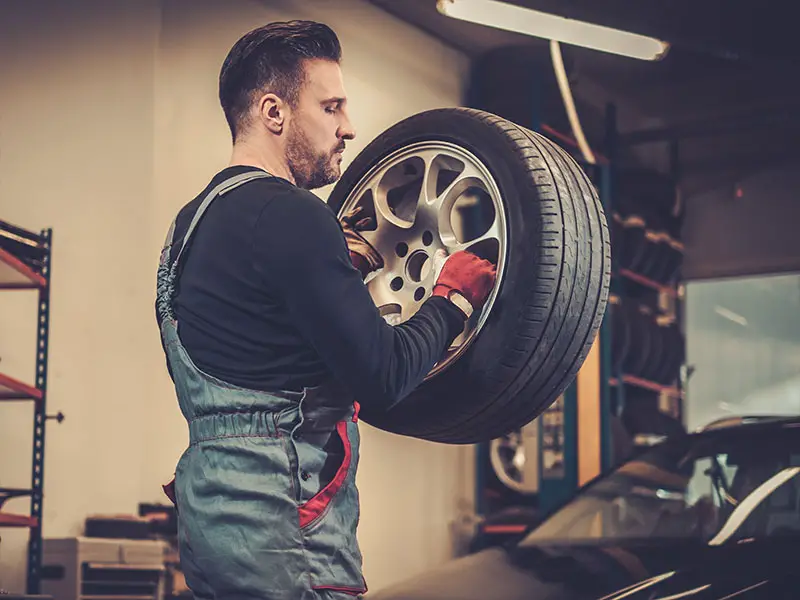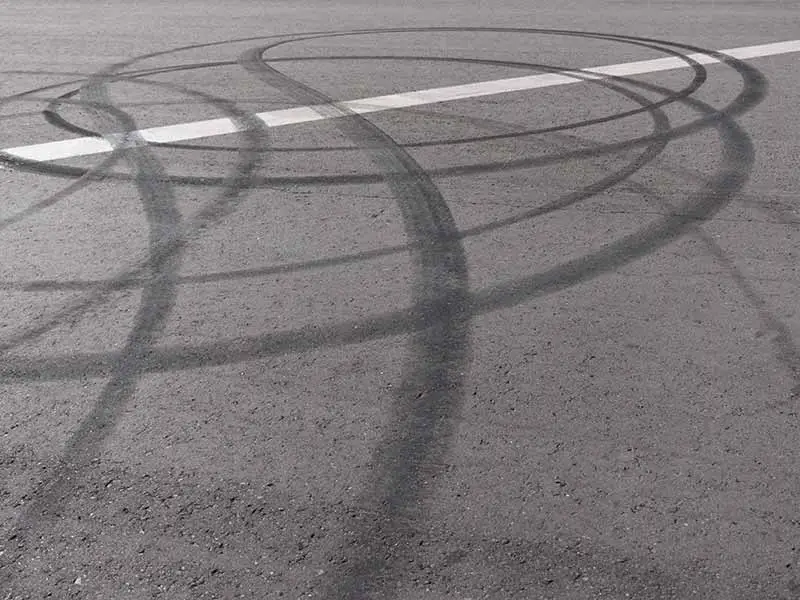One of the benefits of tire rotation is longer lasting tires. But how long will they last if you don’t rotate them at all?
Tire manufacturers warranty tires to last a specific number of miles. This is their best guess as to how long a tire will last if they are maintained properly. Their warranties usually include a requirement that you rotate your tires every 5,000 miles or so.
If you don’t rotate your tires you should expect the mileage the tire manufacturer guarantees to be more than you’ll be able to get out of them.

Tire rotation is only one factor and there are many factors that can have drastic impacts on how long your tires last.
How Long Do Tires Last Without Rotation?
All things being equal, tires without rotation will usually last 25% less as long or more. However, this number can vary drastically depending on many other factors.
For instance, a sports car with an aggressive suspension setup can benefit substantially from regular and frequent tire rotation. Without rotation, a sports car like this may see tire life cut in half.
Let’s go over the details of what makes tire rotation worthwhile and how it helps your tires last longer and perform better.
Why Tire Rotation Helps Tires Last Longer
Regular tire rotations help even tire wear by shifting around tire wear around the surface of the entire tread. Not having your tires rotated keeps the pressure point between the tire tread and the pavement at one point for the entire life of the tire.
In the end, the tire will completely worn out in one area of the tread while there is a significant amount of tread life left on other parts of the tread of the same tire. However, if the tread is completely worn in one spot, the entire tire will need to be replaced.
How Tire Rotation Helps Different Drive Types
Tire rotation helps tire life by shifting tires around from a location that wears tires quickly and poorly to a location that wears tires very slowly.
For instance, front wheel drive car tires take a lot of abuse. Not only do they suffer severe cornering wear due to being the tires that control steering, they are also the tires that grip and propel the vehicle forward.
The rear tires of a front wheel drive car take very little abuse. It’s very possible to run through several pairs of front tires before the rear tires need to be replaced if you don’t rotate your tires.
Benefits Of Tire Rotation
There are several reasons to you rotate your tires beyond longer lasting tires:
- Maintain Tire Warranty
- Even Tread Wear
- Smoother Ride
- Quieter Tires
- Save Money
- Better Traction And Performance
- Identify Problems Early
- Less Strain On Suspension Components
- Safety
Tire Rotation Pattern
There are several tire rotation patterns designed for specific situations. Generally, a tire rotation pattern is picked based on which axle is driving the vehicle forward. The following are the 3 main tire rotation patterns used.
Forward Cross
The forward cross pattern moves the rear tires forward and across to the opposite side of your car or truck. The front tires move to the rear and remain on the same side.
The forward cross is best used on front wheel drive vehicles.
Rearward Cross
The rearward cross pattern moves the front tires rearward and across to the opposite side of your car or truck. The rear tires move to the front and remain on the same side.
The rearward cross is best used on rear wheel drive and all wheel drive vehicles.
X-Pattern
The X-pattern moves the rear tires forward and across to the opposite side of the vehicle and the front tires rearward and across to the opposite side of the car or truck.
The X-pattern is best used on all wheel drive vehicles but can be used on both front and rear wheel drive cars and trucks.
Other Considerations
Tire rotations can only help your tires wear properly if everything else is correct. Let’s briefly cover some of the other considerations to keep in mind to ensure you get the longest life out of your tires.
Tire Pressure
Regularly check your tire pressure to ensure that the pressures match those listed on the sticker in your driver’s door jam. Proper tire pressure is as important to tire wear as tire rotations. Over-inflation will cause your tires to wear in the center. Under-inflation will cause your tires to wear on the shoulders.
The pressure in your tires will fluctuate based on the current temperature. When temperatures begin to fall, your pressures will drop. When the temperatures begin to rise, so will your tire pressure.
Check your air pressure at least every 6 months and don’t rely on your tire pressure monitoring system as your only method of checking your pressures.
Tire Balance
Ensuring your tires are properly balanced will prevent odd wear patterns. Unbalanced tires will essentially bounce as you go down the road. This will cause areas that will wear more and areas that will wear less.
Tires can become unbalanced slowly as they wear or due to slightly bent wheels. Be sure to have your tires balanced occasionally to prevent poor wear due to this type of problem.
Tire Alignment
Alignment is very important to even tire wear. Alignment can drift due to damage from potholes and curb strikes or suspension wear and age.
Alignment should be performed regularly to ensure that your tires are aligned according to the vehicle manufacturer’s recommended specifications. Small differences can significantly reduce tire life.
Tires should be aligned at every other tire rotation or sooner. This is usually around 10,000 miles for most car owners.
Final Thoughts
Tire rotations are just one important aspect of tire maintenance and is important to ensure you get the most bang for your buck from your tires.
Check your tire manufacturer’s requirements for meeting the requirements of your tire warranty in the event you need to make a claim. Usually this requires you rotate your tires every 5,000 miles or so.
Be sure to stay on top of the other important tire maintenance considerations to make sure tire rotation is worthwhile.
Resources
Below are some links you may find helpful when learning about tires




